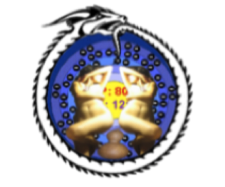
“As in metal, so in the body” ~ aphorism from the Rasarnava
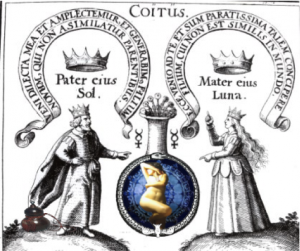
A Metallurgical Romance
There is something instinctively sexual in the mastery of fire. “Fire itself was looked upon as the result (the progeny) of a sexual union” (Eliade 1956). The confining of heat and hot flames to coax a living volatility from mater, alchemically impregnating metals and minerals with spirit climaxing in a magical fusion of the mystery of the trinity: how two become one and three. The oldest myths conjure the associated sexual magic of procreation and creation in the womb-like foundry. The bellows and breath, so crucial in sexual inner alchemy, must be focused to constantly raise the temperature until the metal glows red-hot, then pounded with rhythmic violence and suddenly cooled and quenched in the afterglow of hissing steam. It is the heat that draws out the inner lattice patterns and crystalline structures in the humid sweat of passion, fusing and blending the two into one. Mining is a descent to the nether regions of the earth goddess, into her deepest and darkest caverns, where her precious ores and minerals lie concealed. The vegetal and mineral/metal kingdoms were highly sexualized as a sympathetic act to the macrocosm, from the orgiastic rites of grafting plants to the sexual taboos of metallurgy. The potter, the shaman and the smith all master the sacred and profane fires that burn within and without of the warring passions of creation and destruction. The fire purifies but entices, and the inner heat of ascetic action paradoxically brings forth ecstatic bliss that can exalt and seduce yogi, monk and priest alike. Fire purges impurities, allowing opposites to reconcile in union, alloying, amalgamating, wedding and welding.


The Mother Land
Africa’s tribal smiths and secret societies demonstrate sexual associations with metallurgy from the most ancient times. The early traditions and taboos drifted and influenced much of the ancient world, even if much of the original observances and folklore are inverted (Blakely 2006). Tribes like the Kitara divide ores into male (hard, black, found at the surface) and female (soft, red and from deep inside mines) “and the mingling of the two ‘sexes’ is indispensable to fruitful fusion” (Eliade 1956). Ores were like embryos “they ‘grow ripe’ in their telluric darkness”, and in ancient Egypt, the same word bi meant both “uterus” and “mine” (Eliade 1956). The entire smelting process, for many tribes, is a complex code of restrictions that usually involved explicit sexual dancing, singing of bawdy lyrics and yet restricting the sex act and limiting contact of women with the smith and the furnace itself.
The West African tribes have metallurgical guilds and associate smiths and metalwork with sorcery. Early missionary accounts were fascinated with the “gynecomorphic furnaces” and as Blakely (2006) notes, “the symbolic equation of
 metal production and human sexuality—especially female—is among the most remarked-upon aspects of African metallurgical traditions.” Blakely discusses at length the connections that lingered from ancient cultures, primitive societies converging in the sexual symbolism and metalworking with a special emphasis on ancient Greece and certain African tribes. The furnaces are marked with breasts and symbols of female genitalia, and various words for furnace parts are the native terms for vulva, breasts, and bellows, while tuyeres are distinctly phallic, and the acts of heating involves thrusting phallic objects into the womb or mouth of the furnace. Slag takes on the native term for placenta while blocks of iron are called “son of the woman”, while the furnace as a whole is thought of and referred to as a “nubile woman” and, eventually, the “wife.” A smith must abstain from his human wife during the period of the smelt or he is guilty of “adultery” with the feminized furnace, which may cause failure of the operation. Pieces of after-birth or genitals and magic herbs are thrown into the fire to magically assist the fusions, and the product is thought to have potent magical and aphrodisiac effects. Slag is thought to be a powerful medicine to cure infertility (Blakely 2006).
metal production and human sexuality—especially female—is among the most remarked-upon aspects of African metallurgical traditions.” Blakely discusses at length the connections that lingered from ancient cultures, primitive societies converging in the sexual symbolism and metalworking with a special emphasis on ancient Greece and certain African tribes. The furnaces are marked with breasts and symbols of female genitalia, and various words for furnace parts are the native terms for vulva, breasts, and bellows, while tuyeres are distinctly phallic, and the acts of heating involves thrusting phallic objects into the womb or mouth of the furnace. Slag takes on the native term for placenta while blocks of iron are called “son of the woman”, while the furnace as a whole is thought of and referred to as a “nubile woman” and, eventually, the “wife.” A smith must abstain from his human wife during the period of the smelt or he is guilty of “adultery” with the feminized furnace, which may cause failure of the operation. Pieces of after-birth or genitals and magic herbs are thrown into the fire to magically assist the fusions, and the product is thought to have potent magical and aphrodisiac effects. Slag is thought to be a powerful medicine to cure infertility (Blakely 2006).
Like alchemical processes the world over, the alloying of metals or chymicals was thought of in overt sexual and marital ways. Blakely (2006) notes that the taboos are to keep the sexual powers in reserve in uniting the “male and female ores”, (possibly deduced by observations of male/female plants) as expending energy might cost success in the smelt. The wife must not commit adultery either, or the final product might contain many holes. Central to the rites, sexuality and spiritual energies of the tribes, like the tapas of Indian ascetics, is heat. Heat provokes conception, allows fusion, and like fire itself can create and destroy if it is not controlled with true mastery. It’s a laborious process, fraught with dangers of failure, and the sexual lyrics of which men compete to be more obscene, help pass the time for the lengthy process.
(A video of a smelting ritual may be viewed here)
The rhythmic pounding of the hammer and anvil, also sexualized as phallic and vaginal symbols in certain tribes, on red-hot iron has a sexual cadence. The concentrated forces, thrusts, and banging of metal on metal unleashes the inner passions of the metals, lowers their inhibitions, their structural integrity until they abandon and exhaust their individual forms to unite. The refined metal emerges for war and agriculture or ritual, bloomed and birthed with a new strength.
Foundry of the Gods
When the work of bisection was complete it left each half with a desperate yearning for each other, and they ran together and flung their arms around each other’s necks, and asked for nothing better than to be rolled into one. Aristophanes, Plato’s Symposium
Blakely (2006) deftly moves back and forth from tribes in Africa to the metallurgical mythos of Greece. The Greek gods, daimones, and heroes are often linked with divine metallurgical associations. These connections arose from archaic myths and initiatory rites linking metal-craft with apotropaic magic, fertility, and a powerful sexuality. The priapic metalsmith Daktyloi and the Telchines abound in mysterious chthonic energies. Their magical metalworking was behind statues that would “breathe and move”, crafting such godly weapons as Poseidon’s trident, and they were skilled in the pharmaka of entheogens and herbal magic. These shape- shifting, amphibious, metallic sorcerers all dance ecstatically, with swinging phallos, in attendance of the Great Mother. Blakely (2006) notes that “the more metallurgical the daimones are, the more hostile, magical, and invisible or bizarrely deformed they may be.” Speaking of deformation, it is suggested that Hephaistos’ deformity was from arsenic used in arsenical bronzes that often poisoned smithies’ limbs (Blakely 2006). We have but dim glimpses into an elaborate mystery tradition that blended metallurgy with entheogens and the Mysteries. For a discussion of alchemical symbolism and the organs of generation and Traditionalism see Blackhirst’s (2008) thought provoking Primordial Alchemy and Modern Religion.
The promiscuity of the Greco-Roman gods/planets wander into astrological, metallurgical, entheogenic and alchemical realms as their relationships are suggestive of techniques concealed in myths. The cuckolding of Hephaistos and the alloyed “Net” is discussed below in the research of Starkey and Newton, but another relevant and primary example is Venus/Aphrodite. We can do no better than to quote a section from the superb article The Metal-Planet Affinities by Nick Kollerstrom (retrieved 2012):
“To trace the connection of copper with Venus we have to go back to a distant mythological era: back, in fact, to a Mediterranean isle, once ruled by a love-goddess – the island of Cyprus. This island was regarded as the domain of Venus-Aphrodite. Aphrodite was referred to as the ‘Cyprian goddess’. In Botticelli’s picture, The Birth of Venus, she is depicted as being born from the sea on to the shores of Cyprus. It is from the name of this island, Cyprus, that the word copper derives. The word copper comes from the Latin word cuprum and this derives from the Greek work Kyprus. Cyprus was in antiquity the principal source of copper, and so the metal was named after it. Venus was felt by antiquity to dwell just where such large amounts of copper had condensed. Venus was credited with a sea origin, and copper reminds us of this connection with the water element. All copper salts are sea-coloured, blue or green. All the ores and all the salts of copper are hydrated, water containing. Nearly all copper salts are highly soluble in water. The iridescent hues of a peacock’s tail derive from green-blue.”
To this we shall have more to add in a forthcoming monograph on the alchemical uses of sea-water, which has a long history of use. Venus’s birth of a scallop, a source of calcium oxide for lime and lye, and the sea foam and water contain a living philosophic nitre, like dew, thunderstorm rain and urine. As Eliade (1956) quotes of the Bergbuchlein explains the “birth of copper ore by the influence of the planet Venus, that of iron by the influence of Mars and that of lead by the influence of Saturn.”
The Way of the Smith
“Smiths and shamans come from the same nest” Yakut proverb
Yu the Great, the divine smelter “could distinguish male from female metals” and “for this reason he saw a parallel between his boilers and the two cosmological principles of yang and yin” (Eliade 1956). Eliade (1956), on the ancient Chinese concepts of the “marriage of metals” notes that Yu’s cauldrons were divided into male/female types and the smelting was attended by virgin youths “who sprinkled the water over red metal.” This symbolism extends into the tempering of swords and alloying of metals as a marriage-rite. Other Chinese myths involve the husband and wife magically trying to influence the fusion, or Ancient Masters marrying a girl to the presiding spirit of the Furnace. The sex in Daoism, where the sperm is steamed in the inner cauldron to repair the brain, corresponds to the alchemical crucible that is hermetically sealed against leaking. As in Tantric yoga1, the adept must bring the heat up slowly, careful not to orgasm or force a distillation or sublimation, and fix the energy as to be stabilized just to the brink… of evaporation/explosion or ejaculation. This is repeated over and over again, the circulating liquids, chi and vital energies slowly open themselves up to their more noble states of philosophic exaltation, to become the subtle ingredients for the elixirs, internal and external.
Processes of alchemy, internal and external, were described in sexual terms of metals. Cinnabar was Yang but Quicksilver, Yin. Gold and Jade and “True Lead” are Yang while “True Mercury” and Silver are Yin. Sivin (Needham 1980) wrote in his The Theoretical Background of Elixir Alchemy:
“The Five Minerals (wu shih) are the seminal essences of the Five Planets. Cinnabar is the essence of the mature Yang (thai yang), Mars.
Magnetite is the essence of the mature Yin, Mercury. Malachite is the essence of the young Yang (shao yang), Jupiter. Realgar is the essence of Divine Earth (hou thu), Saturn. Arsenolite is the essence of the young Yin, Venus. A medicine made from the essences of the Five Planets can give a man perpetual life, exempt from death forever.”
To reemphasize, both inner and outer operations of alchemy, sought to steam the ching (seed, semen) of man and metals in a complex correspondence with celestial cycles influencing the macro- and microcosmic universes. Capturing the yang energy, sexually and internally inside the adept and externally in the crucible, used the same sexual terminologies. “Realgar occurs in the same mountains as orpiment, and is formed by the transformation of orpiment. (This latter) great medicine of heaven and earth (i.e., of the natural order) is called ‘doe yellow’ (tzhu huang). When eight thousand years have passed, it transforms into realgar, the variant name of which is ‘imperial male seminal essence (ti nan ching). After another thousand years have passed it transforms into yellow gold, with the variant name ‘victuals of the Perfected (or Realized) Immortals (chen jen fan).”
The pairing of elixir ingredients formed families, as alloys fused and produced a third unique product. As Sivin (Needham 1980) again writes, “The point is reinforced by the image of a family, in which the immature Yang, or Wood (identified by its visceral and colour associations) is the father, the immature Yin, or Metal, the mother, and the mature Yin, or Water, the son. This feminine son redeems his family through a return to the Centre, that is to say through his role as an intermediary in the formation of the Yellow Sprouts from which the Elixir is grown. The oral formula says: ‘Use 8 oz. of lead, which is Yang, the Masculine, and the Tiger; and 9 oz. of quicksilver, which is Yin, the Feminine, and the Dragon. These two ingredients may metamorphose into a Lead which is also Yin. It corresponds to black, Water, and the number 1, and is Yin (Sivin in Needham 1980).
Tantric Metallurgy
The subtle sexuality of the yin and yang of Chinese alchemy becomes much more overt in Indian alchemy. Here the adept, like the Daoist who must fast and purify, must free himself of temptation and devote himself to the gods. But the actual procedures often involve “erotic rituals” and center upon the worship of a phallus or rasalingam of “fixed” (alloyed with silver and herbs) mercury for Shiva. Mercury itself, like all the alchemical substances, is overtly sexual, as it is known as Harabija or the “semen of Shiva.” Mineralogical expressions of the Goddess’s sexual fluids manifest in her sexual emissions as mica and her menstrual or uterine blood as sulfur (White 1998)(as depicted in the title graphic, over a microscopic view of blood and semen). Shiva is the blue-throated swallower of poison. But in another instance it Shiva’s toxic semen that is spilled when he was interrupted with having sex with his consort by the god Agni (fire). Shiva commands Agni to drink the semen, and Agni tries to “swallow” the sperm (mercury) but he could not retain it. White’s descriptions of mercury, semen and Shiva is truly inspired, and here is a but a portion on mercury’s ability to “swallow” metals:
“A ‘seed’ (bija) of gold or silver is planted in mercury (whose powers of absorption have been massively enhanced through a series of treatments in sulfur. Mica, and other mainly ‘female’ elements), which then becomes possessed of a ‘mouth’ capable of ‘swallowing,’ of absorbing into itself, according to the alchemical scriptures, millions, and even billions and trillions, of times its mass in base metals…for the alchemist to swallow the mercury in question to himself become a second Siva: an immortal superman (Siddha) (White 1998).”
Siddha alchemical texts abound in the sexual nomenclature of the essential alchemical substances, with the standard attributes “of the sulfur-mica as the menstrual-sexual emissions of the Goddess Gauri” and the mercurial semen of Shiva (White 1998). The legend is that Shiva was having intercourse with Parvati, and just at the verge of ejaculation he was interrupted by demons. He chased them away, but discharged his semen while pursuing and when it touched the earth it became mercury (Puri 2007). The gods were intending to procure a son to kill the demon Tarakasura. Some traditions have the gods send the fire god Agni in the form of the dove to stop the seemingly endless coition, and discovering that the prying eyes of the bird was Agni caused Shiva to become shy and cease the sex act. But he ejaculated at the same time and hurled the semen at Agni, who couldn’t bear its heat and threw it into the river Ganga, which also could not bear the potency. “Out of this semen, emerged different kinds of metals, which are capable of making the body stable (Reddy 2007).” The sperm lowered into deep wells, and due to its heaviness it sunk down deep into the earth. Other legends tell of Nagas closing up the Rasa wells with mud and stones and denying the potent Rasendra (Reddy 2007).
Puri (2007) writes, “In Indian alchemy mercury symbolizes the union of Siva and Sakthi (Parvati), and it is termed as Siva beej (the seed of Shiva), and sulphur Parvati beeja (the seed of Parvati). It signifies the universal law of creation, that is, unless both female and male gametes do not unite there will not be any further creation.” It is no wonder mercurial drugs are highly touted all over Asia as potent aphrodisiacs, and sexual fluids themselves are magical power substances that alchemically transform into amrta, the nectar of immortality (see elaborate details of this in White 2003). This fits into a large complex of rasa or sap or liquid, fluid, or juice.
Gold was also associated with divine semen: “Indra, intoxicated with soma, began to “flow out” “every kind of creature, plant and metal. From his navel, his life- breath flowed out and became lead, not iron, not silver; from his seed his form flowed out and became gold” (Shatapatha Brahmana xii, 7,1,7) (Eliade 1956). Similar myths are found in other Aryan cultures The Primordial Man of ancient Iran whose body was made of metals, “allowed his seed to flow to earth…(and) the seven kinds of metal appeared from his body.”(Eliade 1956) In the Zath-sparam, x, 2 “when he died, the eight kinds of mineral of metallic nature came forth from his different members, namely, gold, silver, iron, brass, tin, lead, quicksilver, and diamond; and gold, in virtue of its perfection, issued from actual life and from the seed.” (Eliade 1956). Metals were thought to be alive, but in various states of perfection, in a hierarchy of decreasing nobility from gold to the lead. It could be extrapolated as a model for world ages and caste systems, just as the heat of distillation likely informed many notions of a spiritual afterlife in which a subtle essence is removed from its dross shell, alighting upwards in a spiritual form. But the alchemist could transcend the time involved in the natural process and with art, mature embryonic ores and veins of metals, transmuting them to their nobler forms.
White’s (1998) research gathers much sexual lore of Siddha alchemy that one must consult his text for more details. But some other primary examples might center upon the role of the alchemist’s assistant and her menstruation cycles, “Her menstrual blood (then) becomes efficacious in the fixation and calcination of mercury” and sources “instruct the alchemist to place said mercury, wrapped in a piece of cloth, deep in his wife’s vulva…or to macerate sulfur in a woman’s menstrual blood in order to increase its potency. On the term sulfur umayoni- samsarga, White (1998) writes: “that which issued from the vulva of (the Goddess) Uma, states that mercury can be bound and made complete (samskrta) only by entering into that yoni i.e., sulfur. Reproductive symbolism is explicit here: mercury, of which one name is suta (‘that which is born, generated’), …here enters into the womb of the Goddess (sulfur) to become activated.” Elsewhere sources stipulate sexual intercourse is “essential to the activation of the mercury the alchemist has ingested (and adds that said mercury turns him into a sexual animal) (White 1998).
Noting the choice of the term menstruum as a solvent, from the menstrual blood, I would add that this blood appears when reproduction is possible. Its first arrival signals womanhood, or the emerging sexuality and puberty and the ability to procreate. The moon and menstrual connections, as well as the connections of copper and the blood biology of women point to deeper metallurgical mysteries. As discussed below, alchemists spoke of the seeds and menstrual fluids of metals, and the monthly blood signaled that pregnancy had not occurred following the “wedding” or coitus. These metaphors ring true from Africa to India to the American alchemist Starkey. The inner-alchemical Tantric/Daoist cults, and some Islamic and Christian gnostic sects, viewed sexual fluids as sacraments and “power-substances” and as deeply magical.

Adulterous Metals, Chymical Nuptials, and Copulating Minerals
The gods’ sexual exploits are notorious, and range from affairs and erotic trysts to more deviant sex acts like rape and pederasty. In the case of the divine smith Hephaestus/Vulcan, his stunning wife Aphrodite/Venus as copper, was promiscuously exploited in most of the metallurgy uses from ritual to domestic to military. Her affair with Ares/Mars as iron adulterated this pure metal into the service of a new level of warfare. In some sense this myth captures the successive metallic ages transitioning from the Bronze Age (copper and tin) to the Aryan dominated Iron Age.2 Alchemists have been intrigued by this myth up to the time of Newton and Starkey. The sexualization of alchemical processes can be found in many of the earliest Western texts. Metals are base, unless they be the pure, chaste and perfect gold, and likewise have impurities, flaws, faults and lusty desires. It’s this last quality that the alchemists seeks to exalt, to enflame and to consummate. Copper is a beautiful, easy metal, easy to work and easy to mix and mingle with the other metals in various combinations of alloys.
Alchemists like Eirenaeus Philalethes (George Starkey), Robert Boyle and Isaac Newton took the adultery of Venus (copper) with Mars (Iron) and their subsequent discovery by Vulcan (fire) as a process. As told by Ovid, Vulcan casts his “Net” over the two passionate lovers to shame them to the gods and they are caught or “fixed” and fused. Like many alchemists, Boyle, Starkey and Newton were obsessed with antimony sulfide and the regulus of copper and antimony that has a “network” of striations or net-like appearance. Examples of the star Regulus and the purplish “net” are shown below overlaid on top of Newton’s manuscript. The alchemist would refine antimony from stibnite with iron and then add copper, which creates “minute, regular crystals.” Starkey then added sophic mercury and let the whole digest, as was the procedure for a normal regulus of antimony (Holmes et al. 2003).
The sexual language of “conception” or conjunction or impregnation and chymical nuptials and weddings is ubiquitous in much of the European alchemy. We have dealt with the “urine” of youths, virgins and children in a previous paper (Dannaway 2012) and intend a full monograph on the symbolism of virginity in alchemy, with special emphasis on Our Lady the Virgin Mary. Christ was the Word made flesh, cenceptio per aurem (conceived through the ear by the Holy Ghost), spiritualizing matter supernaturally re-conceiving the “something from nothing” intoned creation of Genesis. But its role in the sexual context of minerals and metals, briefly, speaks to an ever-renewing purity, latently primed with kinetic creative energies. Virginal matter, or virginal mothers, represents the womb, the cavern, the cave, the depths of the earth, the introitus (vagina), which is acted upon by spirit and made to birth new life. It is therefore an entrance to a closed palace or sacred cave, an exit from which creation emerges, a threshold, hollow, warm, moist suddenly pregnant with possibilities. What follows are a few primary, or colorful examples amongst many.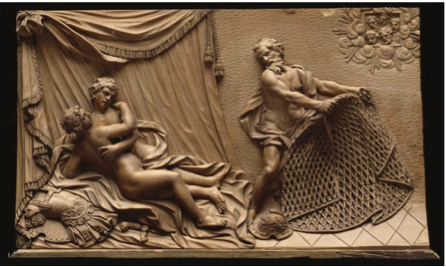
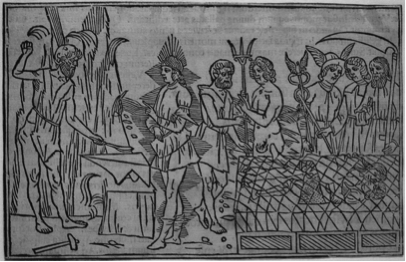


Esteemed alchemists such as Bernard Trevisan argued against the use of corrosives or caustics as they damaged the seed or semen or sperm of the metal. He likened the alchemical impregnation of metals as a process similar to human generation, which was thought to combine male semen and female sperm at conception. Alchemically, these become the masculine elements fire and air and water and earth as the feminine (Newman 2003). The philosopher’s stone is produced, then, by two sperms, one from mercury that is the ‘passive feminine seed’ which is acted upon by ‘masculine seed in gold” (Newman 2003). The sexual theories of metals are also found in Van Helmont, as in his concept of the semen, and can be traced back to the Latin Geber and the (distantly different) Arabian Jabir complex of seeds and ferments in a context of vitalism. Van Helmont and Geber describe mercury’s resistance to chemical “marriage” as the modest protection of virtue, or mercury’s “virginity,” his Chymical Marriage, made famous in Rosicrucian texts, has a long history in the ritualized formation of the philosopher’s stone.
In Von Helmont’s theory, this alchemical prelude involves the insemination of mercury, an impregnation, raising the libido of metals and impressing the microcosmic “libidinous images” (Newman 2003). The 12th century, on Turba Philosophorum, one of the first texts to be translated from Arabic to Latin, states “on the authority of the god Horus: “The proper end of the whole art is to obtain the semen of the male secretly, seeing that all things are male and female. Hence [we read further] Horus says in a certain place: Join the male and the female, and you will find that which is sought; as a fact, without this process of re-union, nothing can succeed, for Nature charms Nature,” and to conjoin the male and female. It is said, the male is said to be lead and the female orpiment (Redgrove 1920).
The Turba says: “Know, we are told, . . . that out of the elect things nothing becomes useful without conjunction and regimen, because sperma is generated out of blood and desire. For the man mingling with the woman, the sperm is nourished by the humour of the womb, and by the moistening blood, and by heat, and when forty nights have elapsed the sperm is formed…. God has constituted that heat and blood for the nourishment of the sperm until the foetus is brought forth. So long as it is little, it is nourished with milk, and in proportion as the vital heat is maintained, the bones are strengthened. Thus it behooves you also to act in this Art.”


“Raymond Lull” or “pseudo-Lull” as he is referred to, followed Jabirian tradition in sexualizing the minerals and metals, as well as the earth itself. Lull, like many other alchemists, conceived that “mercury contains its own nature within the concavity of its womb.” As Newman (2003) wrote of Lull’s cosmology, “the manifest elemental earth contains a true, ‘virgin earth’ at its center” and Lull writes at length on the “sexuality of minerals” in the Testamentum. Lull figuratively divides the mineral kingdom into a three-fold sexuality, “active seed, passive seed, and menstrual blood” (also hermaphrodites) (Newman 2003). “The first sort of mineral seed is that found in the precious metals, gold and silver. The second occurs in base metals, as also in sulfur and mercury. The menstrual blood, finally, is found in minerals per se, such as the salts, alums and the like, from which a “menstrual humidity” can be made (Newman 2003). Newman writes of Lull, “In order to unite substances in a ‘real union’ rather than in a factitious blending, one must join them with the ‘bond of love’.”
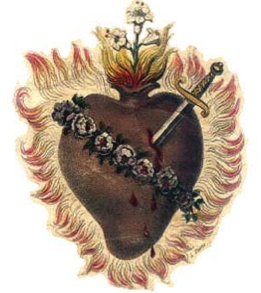

Sexual themes of different types of semen and menstrual fluids of metals and minerals are common among the great alchemists. Such are well studied in certain writings by Thomas Norton and George Ripley, and are abundant in the writings of Paracelsus. Norton writes evocatively in his Chemical Treatise of Thomas Norton, the Englishman, Called Believe-Me, or the Original of Alchemy: “Laudabile Sanctum, ascribed to Hermes, uses the following expression of the Red Tincture: “There lies the snowy wife wedded to her red spouse.” That is to say, in the white Tincture you have a beautiful woman of snowy whiteness espoused to a red husband. If your white Stone is exposed to the heat, and through the action of the fire becomes red as blood, then the marriage is valid and perfect—as in the act of copulation, if it be fruitful, the male seed obtains the ascendancy, and assimilates the female seed to its own nature. That this fact is so, those who have observed the nature of the embryo have been taught by experience. When this has been brought about, our Stone is perfected. The Sages say that it should be nourished with its own poison till it has had enough. When this has been done, you may go wherever you like, for it will defray all your expenses. Thus, then, I have expounded to you the subtle part of the work with all its appurtenances, and more I need not, cannot, and will not, reveal.”
Redgrove (1920) sums it up nicely, “When the alchemists described an element or principle as male or female, they meant what they said…, to the extent, at least, of firmly believing that seed was produced by the two metallic sexes. By their union metals were thought to be produced in the womb of the earth; and mines were shut in order that by the birth and growth of new metal the impoverished veins might be replenished. In this way, too, was the magnum opus, the generation of the Philosopher’s Stone–in species gold, but purer than the purest–to be accomplished. To conjoin that which Nature supplied, to foster the growth and development of that which was thereby produced; such was the task of the alchemist. ‘For there are Vegetables,’ says Bernard of Trevisan in his Answer to Thomas of Bononia, “but Sensitives more especially, which for the most part beget their like, by the Seeds of the Male and Female for the most part concurring and conmixt by copulation; which work of Nature the Philosophick Art imitates in the generation of gold.” The consistency of sexualized operations in alchemy, though they become inversed from the male associations of mercury with Shiva to a feminine identity in Arabian and European alchemy, speaks to the primordial traditional and the true perennial philosophy that informed and preserved genuine lineages of initiation.
Speaking of mines, Eliade (1956) quotes from the 16th century German book on mining folklore Ein nutzlich bergbuchlein of widespread beliefs of the Middle Ages that ores are: “generated by the union of two principles, sulphur and mercury…Furthermore, in the union of mercury and sulphur with the ore, the sulphur behaves like the male seed and the mercury like the female seed in the conception and birth of a child.” This “Little Book of Mining” also discusses the formation for metals as controlled by stars, as gold grows under the influence the Sun. The uniting of celestial male solar/Sol/gold and female lunar/luna/silver energies in alchemy, in the microcosmic sexual couple or the laboratories crucible, is the highest mystery of practical and spiritual alchemy. The traditional associations of sexuality and mining in caves or recess of the earth harken back to the truly ancient notions of the Mother goddess and the feminized earth. Sworder writes, (2008) “Since the metals had a life of their own and were capable of maturation, their natural condition in the earth was compared to that of an embryo in the womb. Similarly the furnace of the alchemist was a kind of womb in which the baser metals would come more quickly to their final state. Some believed that the baser metals were originally gold but had deteriorated like the rest of nature as a result of Adam’s fall.” Taboos and rituals often governed operations and mining was a truly sacred. For a beautiful and thoughtful study of the degeneration of the sacred in mining and metallurgy one can hardly find better than the work of Roger Sworder’s (2008) Mining, Metallurgy and the Meaning of Life.
Afterglow
Like attracts like. Between doctrines of sympathies and signatures, Nature plays the coquette and all of creation beckons like a lover to the alchemist. Bacon and his fraternity might think she is a “wanton harlot” and that She must be “bound into service” and made a slave. But she is at once both whore and Virgin. Promiscuous in infinite, sensual service she is yet immaculate and forever new. Flirtatious, bawdy, sometimes abused and shamed she is the Magdalene. Full of Grace, and Blessed Amongst Women she is coredemptrix, mediatrix, and advocate. She is the theotokos, undefiled and yet Mother. Divided for the sake of union, our first mother Eve was lured away from paradise. Between original sin and wise Solomon’s bedchambers is a sweet, serving and lusty Nature. She is free with her affections and she is still ever Virtuous and Chaste. Beautiful, mysterious and cunning, the toxins of her wrath defy the furies of hell should she be scorned, ignored, or rejected. So Jealousy must yield to chivalry, to humbling servitude and protection. The seduction of her Arts, the coaxing of Sophia to delicately deliver a glance through veils teases lovers and metals in the passions of slow, gentle pulsations and thunderous explosions of raw energy safely in the sexual crucible of true Love. Kyrie, eleison

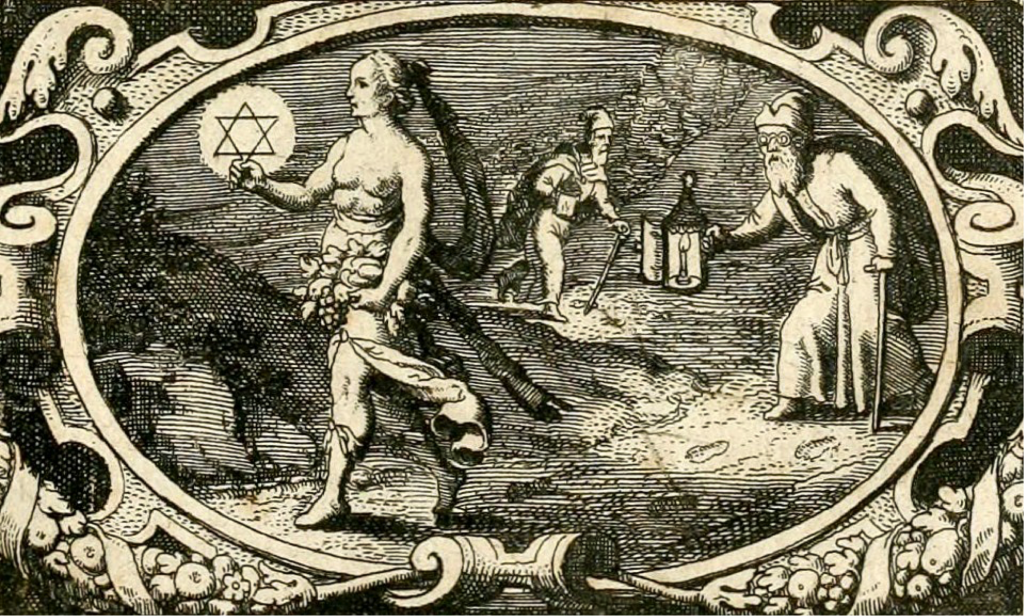
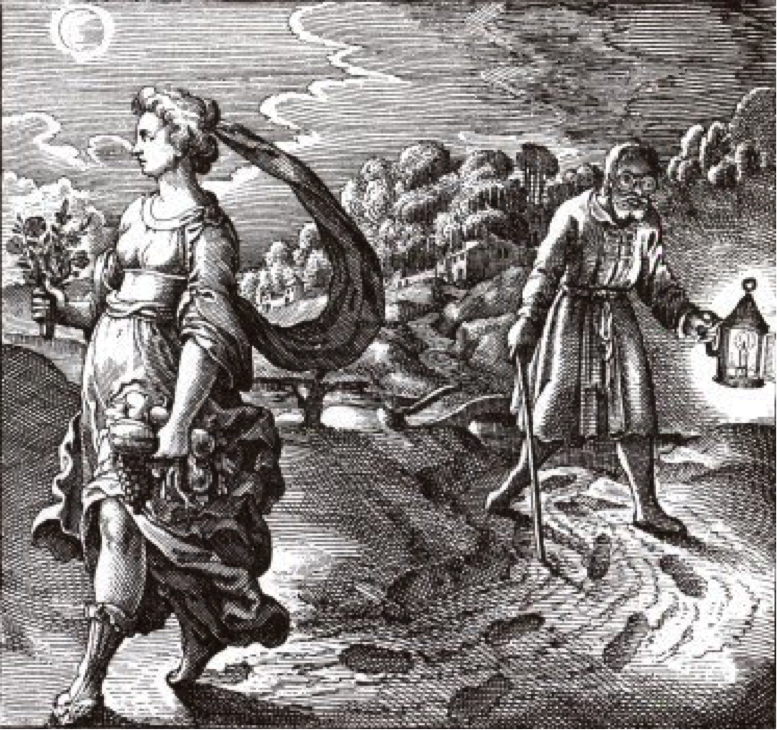
The Master Solazaref presents some erotica and metallurgy in his texts, commenting on the place of eros in paganism, and the lusty heat of a fleshy goddess. And a rather interesting photo combining the metal of a Harley- Davidson motorcycle with a French beauty, with sage advice to truly: live, no matter what the form.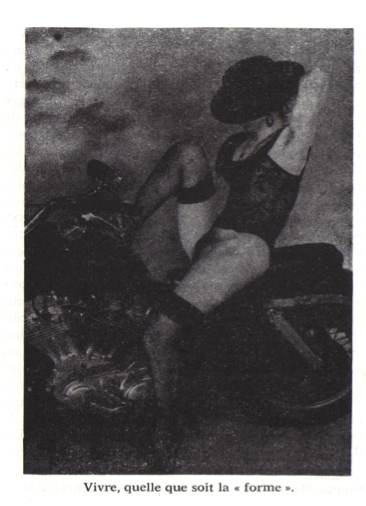

From Ars Brevis, Volume 1 Les Feux du Ciel:
Metals, like people, enzymes, and molecules, are alive, promiscuous, and alchemically sexual attracted.
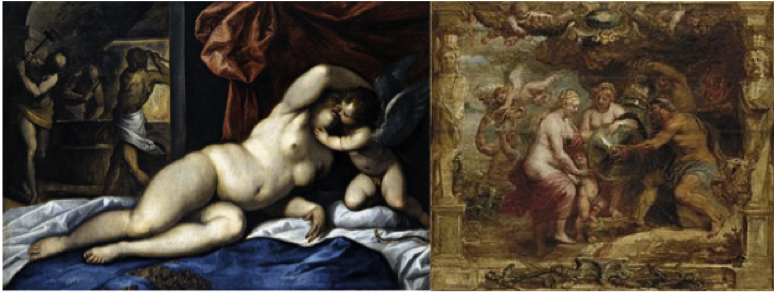

1 the adept must hermetically seal both the crucible and his body to prevent “leakage” of essence, the heating and
2 Some cultures thought demonic iron smithing as ushering a degenerate age, and in Vedic texts it’s considered demonic. It was introduced by the Asur as demons. The smelting of metal is often regarded as a sinister operation requiring the sacrificing of the human life. (Eliade 1956).
References
Blackhirst, R. 2008. Primordial Alchemy and Modern Religion. Sophia Perennis.
Blakely, Sandra. 2006. Myth, Ritual, and Metallurgy in Ancient Greece and Recent Africa. Cambridge University Press.
Dannaway, F. R. 2012. Urina Peurorum and The Fountain of Youth: From Soma to the Philosopher’s Stone. http://www.chymicalphilosophers.org/urina-puerorum/
Eliade, M. 1956. The Forge and the Crucible. University of Chicago Press.
Holmes et al. 2003. Reworking the Bench: Research Notebooks in the History of
Science. Springer.
Kollerstrom, N. Retrieved 2012. Copper and Venus in The Metal-Planet Affinities.
www.levity.com/alchemy/kollerstrom_copper.html
Needham, J. 1980. Science and Civilization in China V.5, Pt. 4. Cambridge University Press.
Puri, H.S. 2007. Ayurvedic Minerals, Gems and Animal Products for Longevity and Rejuvenation. Sri Satguru Publications.
Newman, William R. 2003. Gehennical Fire: The Lives of George Starkey, an American Alchemist in the Scientific Revolution. University of Chicago Press.
Reddy, K. 2007. Text Book of Rasa Sastra. Chaukhambha Sanskrit Bhawan.
Redgrove, H.S. 1920. Bygone Beliefs: Being a Series of Excursions in the Byways of
Thought.
Sworder, R. 2008. Mining, Metallurgy and the Meaning of Life. Sophia Perennis .
White, D. G. 1998. The Alchemical Body: Siddha Traditions in Medieval India. University of Chicago.
White, D.G. 2003. Kiss of the Yogini: Tantric Sex in its South Asian Contexts. University of Chicago Press.
